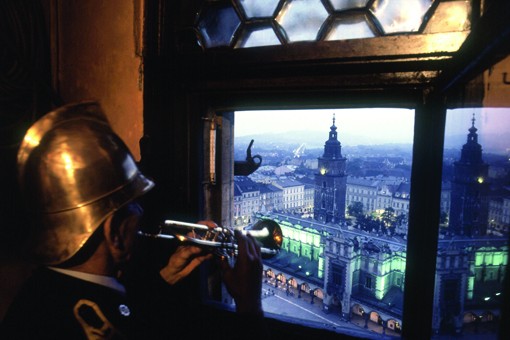 From icy subterranean chapels to hidden Art Nouveau cafés, Krakow’s historical sights are vibrant reminders of its past. Book a Krakow hotel and use this guide to discover the city’s story.
From icy subterranean chapels to hidden Art Nouveau cafés, Krakow’s historical sights are vibrant reminders of its past. Book a Krakow hotel and use this guide to discover the city’s story.The Art Nouveau interior of this bohemian café has seen Krakow’s actors, literary greats and cabaret artists drink coffee and absinthe since 1908. Come for a drink or a plate of bigos stew and discover the back room hideout. Its walls are decorated with caricatures of these cultural firebrands.
ulica Florianska 45, 31-019
Once a residence of Wawel Cathedral’s canons, the Hotel Copernicus is now a luxury Krakow hotel. Splash out at the Coat of Arms Suite with its 14th-century wooden beamed ceiling and 17th-century frescos. Luxuriate in the spa deep in the Gothic cellars.
ulica Kanonicza 16, 31-002
Krakow’s oldest thoroughfare is part of the Royal Way leading to Wawel Castle. The well- preserved street has witnessed centuries of Polish royalty parading on its cobbles and is lined with noble Renaissance houses. At the top, visit royal sarcophagi in the cathedral crypt.
ulica Kanonicza, 31-002
After poring over the sculpted altarpiece at St Mary’s Basilica, church of choice of the city’s burghers, climb the tower. Catch the bugler call on the hour every hour from the four corners of the tower, broadcast live on Polish national radio.
plac Mariacki 5, 31-042
The horrors of the Holocaust are almost tangible at the Auschwitz death camps, 75km west of Krakow. These camps were built by the Nazis as the final destination of European Jews. Guided tours take you to the gas chambers and execution yard. A permanent exhibition with documentary photographs and historic exhibits provides a sombre testimony to the tragedy.
Believed to be one of the world’s oldest markets, the colonnaded Cloth Hall, in the main market square of Rynek Glowny, has hosted traders since the 14th century. Browse the stalls at this historic landmark of Krakow for glowing amber jewellery and handicrafts. Take a break at the Noworolski Kawiarnia café, Lenin’s favourite.
Rynek Glowny, 31-042
This wartime pharmacy, a meeting point and life-saving resource for Jews of the ghetto in the 1940s, is now a museum exhibiting letters and film from the ghetto era. Opposite, ponder the moving installation of 70 chairs positioned around the square, symbolising families being rounded up by the Nazis
plac Bohaterow Getta 18, Podgorze
The corridors of Krakow’s oldest salt mine stretch 300km and descend to a depth of 327 metres. A tour takes in highlights like the huge St Kinga’s Chapel. The chandeliers, altar and statues were made from salt by miners.
ulica Danilowicza 10, Wieliczka 32-020
This eastern district, the last bastion of communist Krakow, is the site of the New Steel Works built by Stalin in 1947. Take a special tour in an East German Trabant car. Or go on foot to discover the former Lenin Steelworks and Plac Centralny, the central square, with its baroque architecture.
Poland’s John Paul II, pope from 1978-2005, lived at these apartments, since converted into a museum. Sacral art dating back to the 13th century is on show. So too are his skis from when he was bishop of Krakow.
ulica Kanonicza 19-21, 31-002